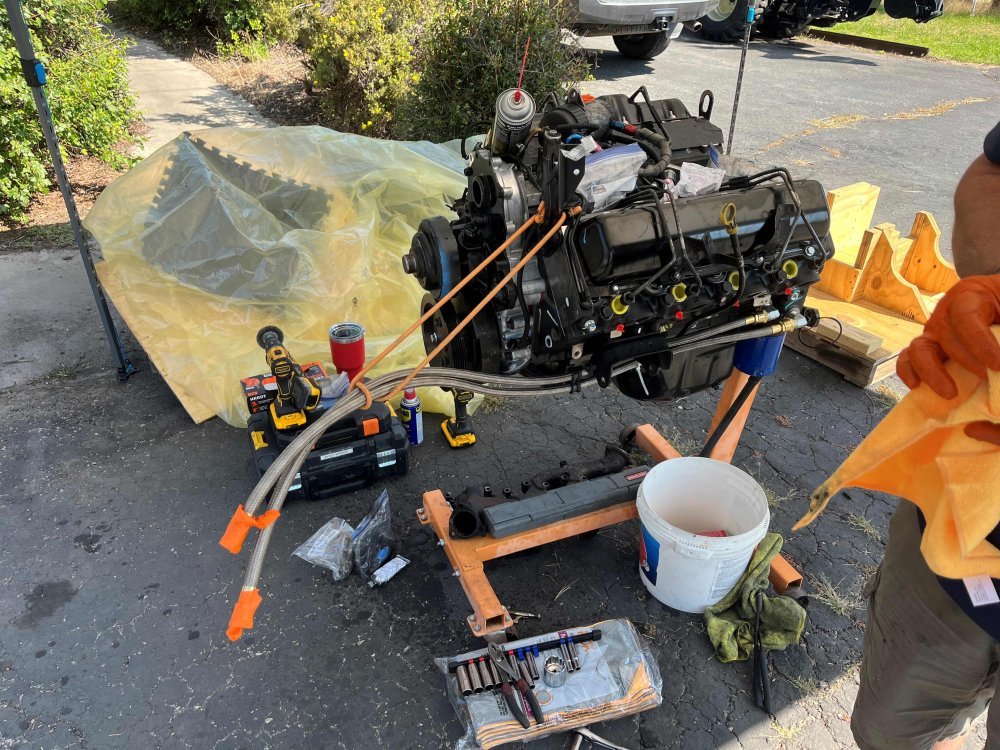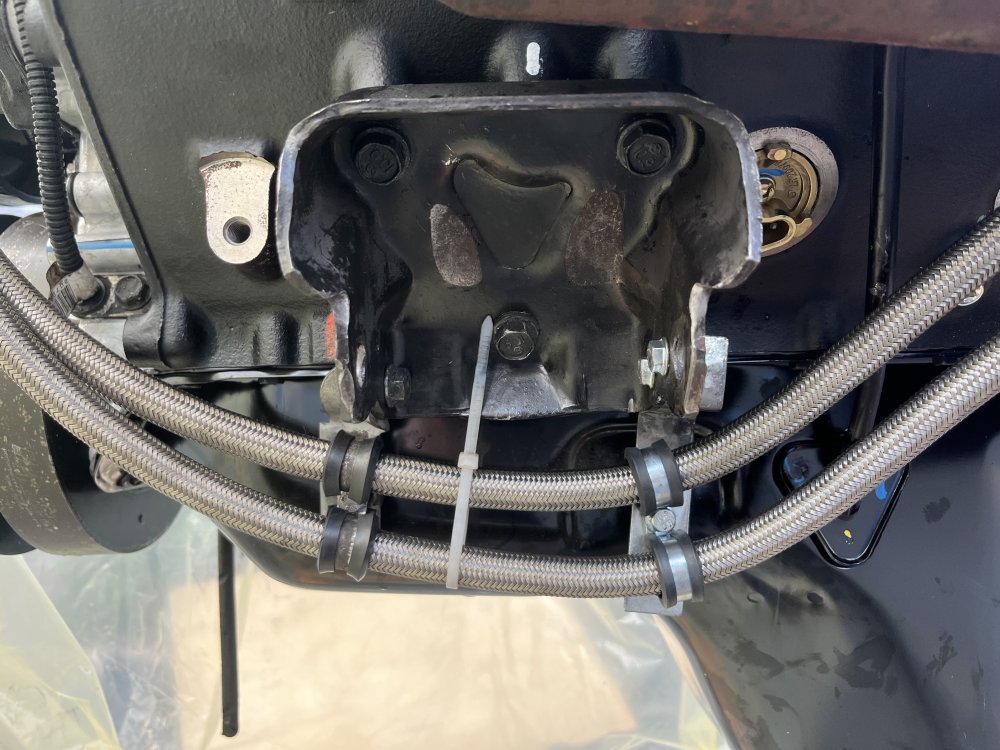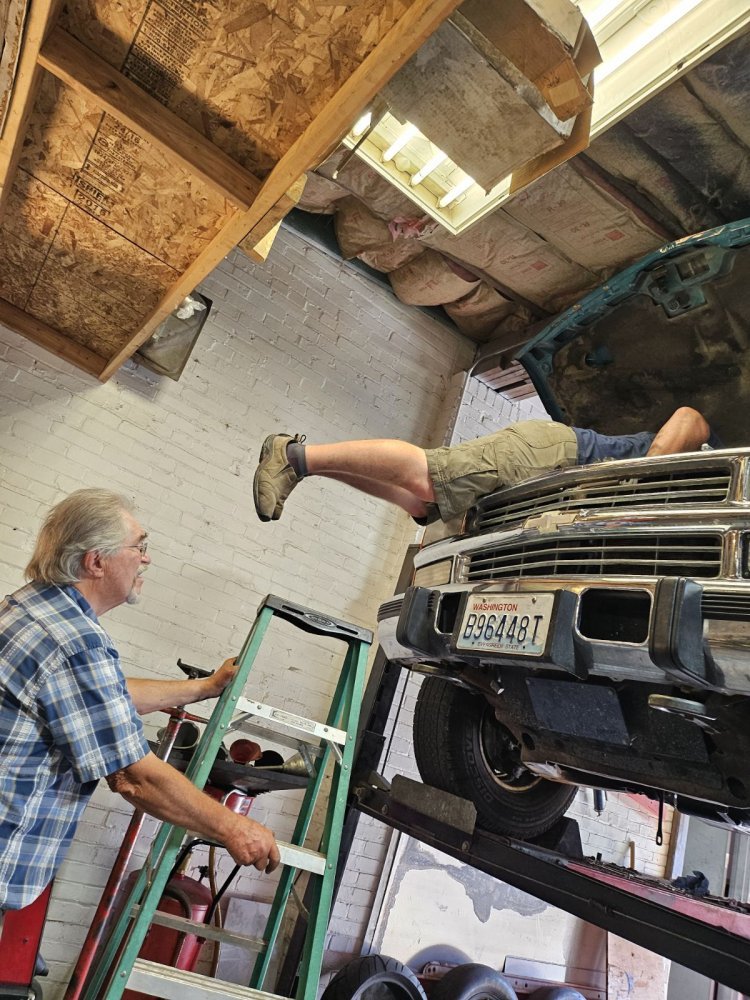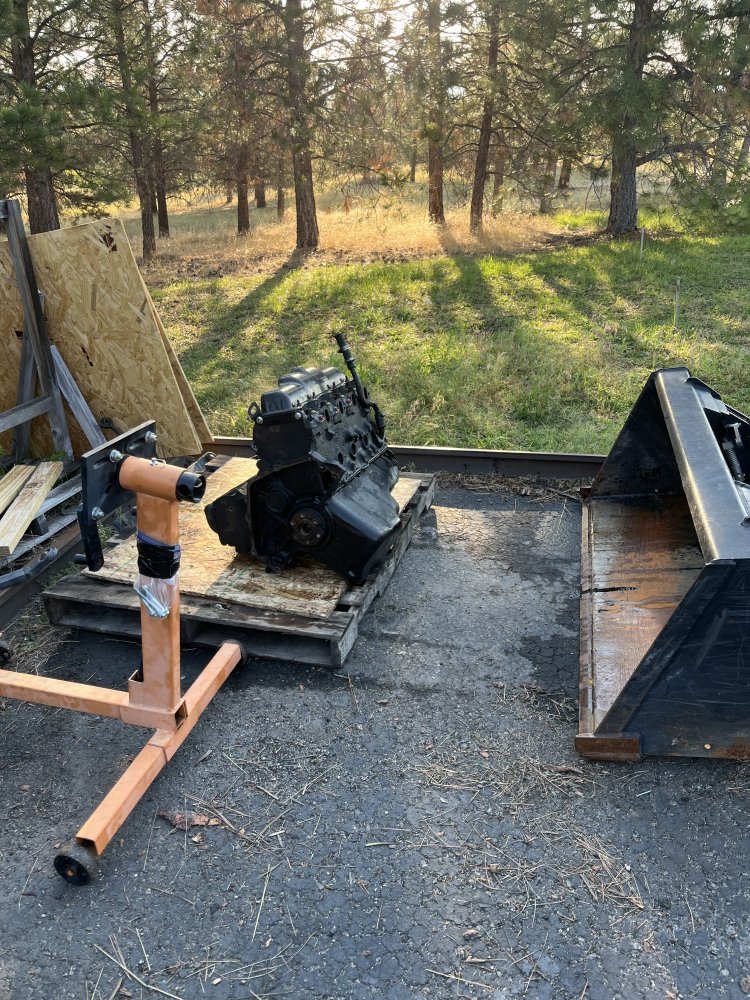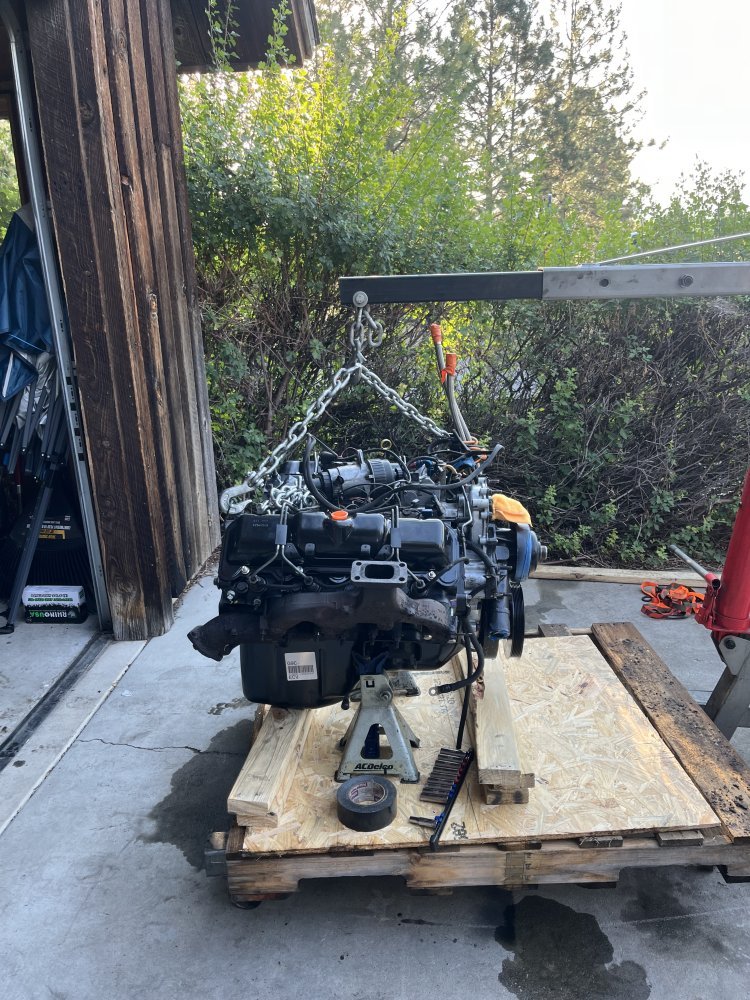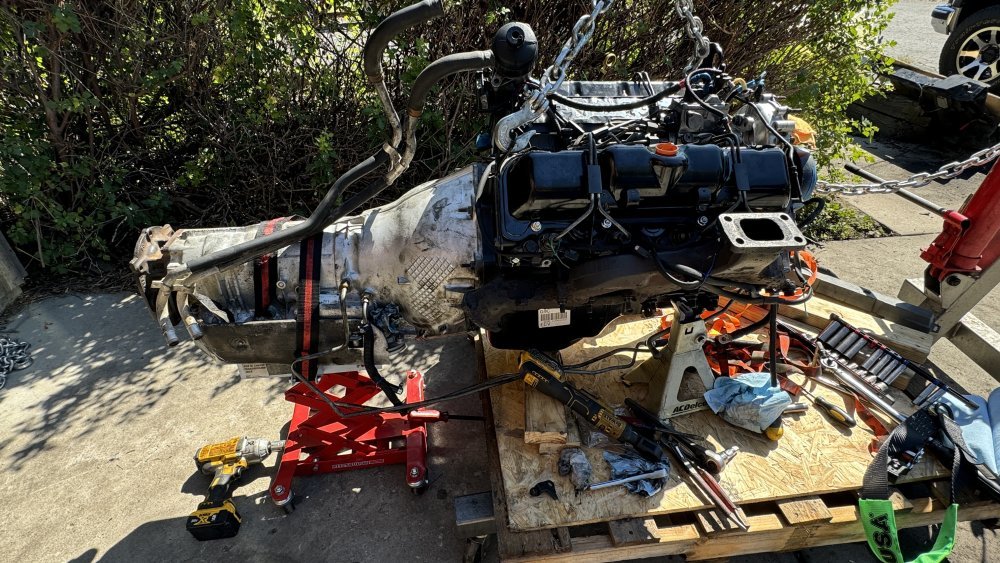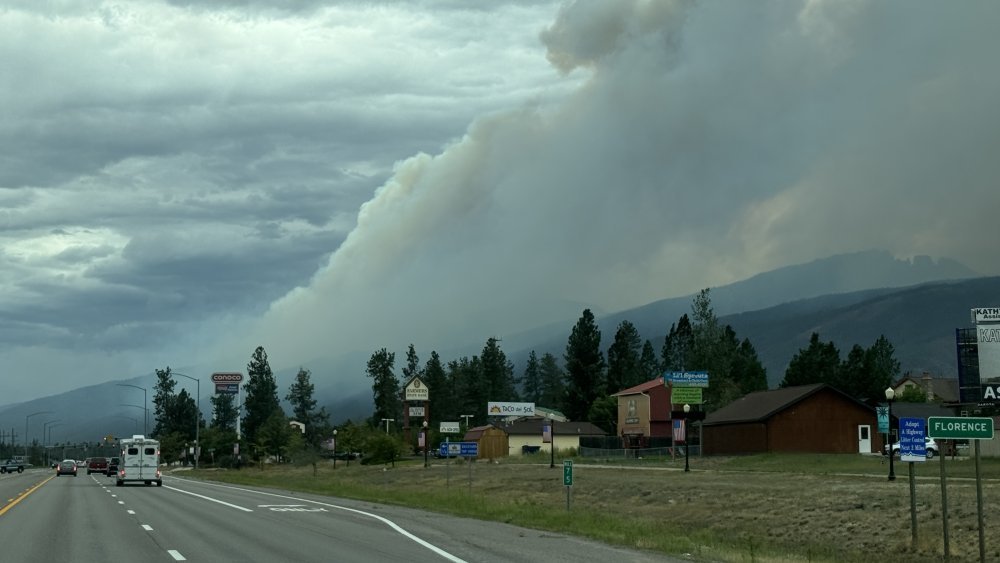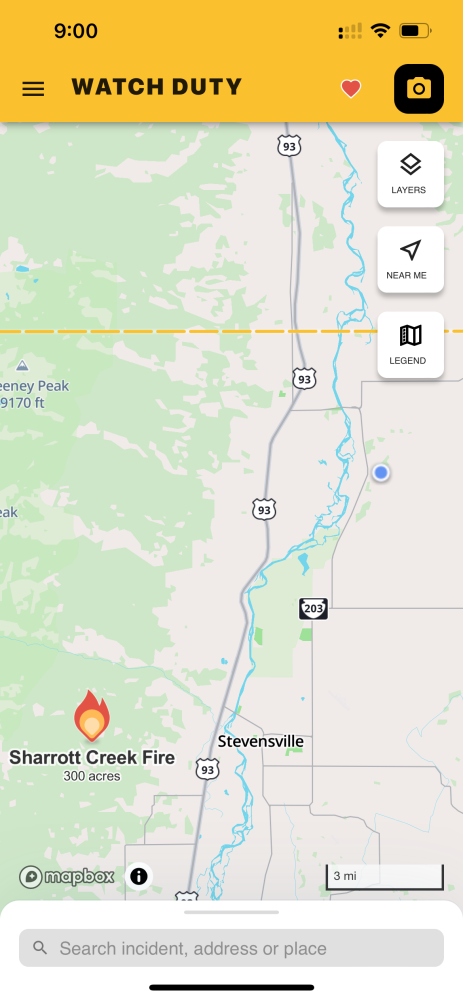Will L.
Well-Known Member
Oh my heck! Now please take those hose to a hydraulic hose shop and have REAL hose made. Thousands of 6.5s have died this way! Know how many in hmmwvs/ Hummers? ZERO. Why? Real hydraulic hoses with real steel plumbing fittings instead of the crappy click fittings GM penny pinchers chose.
There are other things that can cause oil loss. Rock to the oil cooler or bad solder joint in the cooler, blown oil filter seal, oil pump connector failure (I wish someone could make steel ones instead of plastic- I think I might for my current build).
Or the magical hole in the oil pan. OBVIOUSLY all those are crazy chances to happen, but they do. I haven’t figured out where in the oil pan it will have to go but many modern engines use a sensor in their oil pan that tells you if oil VOLUME is low when the engine is running. I am going to install one into my 6.5 oil pan (wish I could into the trans too but can’t). This way when oil level in the engine drops out like yours did- it sets off the worlds most annoying buzzer and flashing red light.
It could be wired in to cut power to the fuel solenoid but because of loss of power steering and power brakes I don’t think it wise.
I used to see this fairly often in the fleet. People think it is only from rubbing like this one obviously is. Others say too many years old for the hoses. I say BS!!! We had trucks we sold that broke 100,000 miles per year, some around 70,000 per year and sold them off once past 3 year mark. We had a few that were ran for high mileage as possible until a wreck caused by our driver and the other lawyer used high mileage as “evidence” we were being cheap at the public’s expense. We were doing long life real world testing for oil company and manufacturers but the legal risk made it not worth taking on new contracts so all that is gone now.
“SQUIRREL!” Sorry.
Anyways… we had factory hoses fail at around 125,000 miles up to 225,000 miles.
All they did before hiring me was inspect during oil changes and replace if they started seeping. Not a bad practice but some still got through and failed. After like the 4th one of me being there I drug one of the owners over to my puckup and showed him MY hydraulic hoses and my connectors.
We then started swapping the hoses out at the 100,000 mile mark when correcting other parts at that interval. When we later had one fail at 75,000 miles on a pickup that makes daily runs from Vegas to Bullhead City Az- they decided to take my original advice and just replace them on day one when we were already replacing the stupid heater connector that snaps in and rots away and relocating the pmd (we were going to in the cabin at the time).
The only engines we ever lost after that from oil loss was the two that took a rock into oil cooler and one that had the plastic connector fail. And honestly I think the second rock issue was sabotage by a mad worker because he had it happen the first time and the second one looked mighty suspicious, and happened to occur at a recreational area he happened to be taking a break at where his girlfriend worked. Yeah….
There are other things that can cause oil loss. Rock to the oil cooler or bad solder joint in the cooler, blown oil filter seal, oil pump connector failure (I wish someone could make steel ones instead of plastic- I think I might for my current build).
Or the magical hole in the oil pan. OBVIOUSLY all those are crazy chances to happen, but they do. I haven’t figured out where in the oil pan it will have to go but many modern engines use a sensor in their oil pan that tells you if oil VOLUME is low when the engine is running. I am going to install one into my 6.5 oil pan (wish I could into the trans too but can’t). This way when oil level in the engine drops out like yours did- it sets off the worlds most annoying buzzer and flashing red light.
It could be wired in to cut power to the fuel solenoid but because of loss of power steering and power brakes I don’t think it wise.
I used to see this fairly often in the fleet. People think it is only from rubbing like this one obviously is. Others say too many years old for the hoses. I say BS!!! We had trucks we sold that broke 100,000 miles per year, some around 70,000 per year and sold them off once past 3 year mark. We had a few that were ran for high mileage as possible until a wreck caused by our driver and the other lawyer used high mileage as “evidence” we were being cheap at the public’s expense. We were doing long life real world testing for oil company and manufacturers but the legal risk made it not worth taking on new contracts so all that is gone now.
“SQUIRREL!” Sorry.
Anyways… we had factory hoses fail at around 125,000 miles up to 225,000 miles.
All they did before hiring me was inspect during oil changes and replace if they started seeping. Not a bad practice but some still got through and failed. After like the 4th one of me being there I drug one of the owners over to my puckup and showed him MY hydraulic hoses and my connectors.
We then started swapping the hoses out at the 100,000 mile mark when correcting other parts at that interval. When we later had one fail at 75,000 miles on a pickup that makes daily runs from Vegas to Bullhead City Az- they decided to take my original advice and just replace them on day one when we were already replacing the stupid heater connector that snaps in and rots away and relocating the pmd (we were going to in the cabin at the time).
The only engines we ever lost after that from oil loss was the two that took a rock into oil cooler and one that had the plastic connector fail. And honestly I think the second rock issue was sabotage by a mad worker because he had it happen the first time and the second one looked mighty suspicious, and happened to occur at a recreational area he happened to be taking a break at where his girlfriend worked. Yeah….

